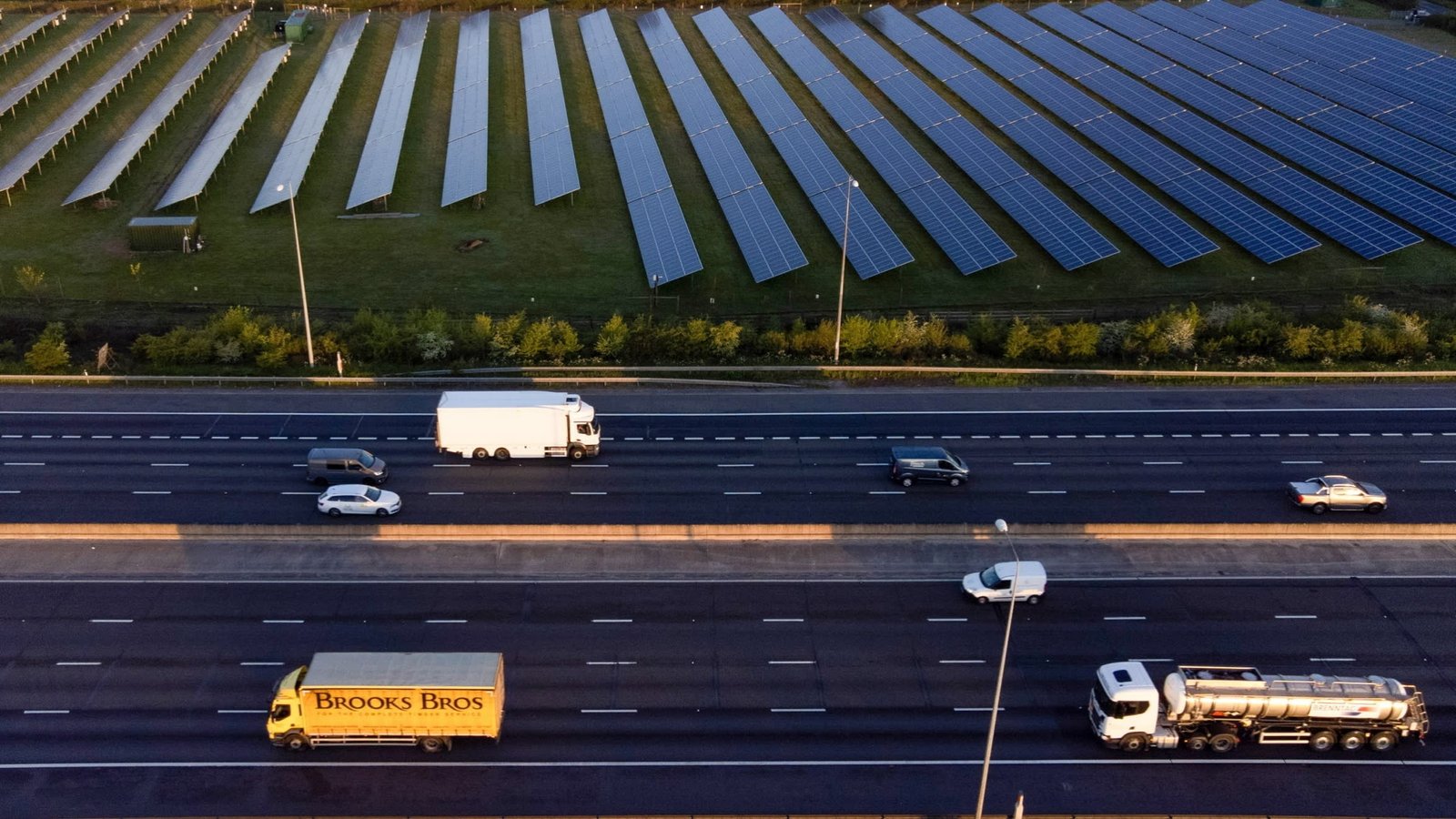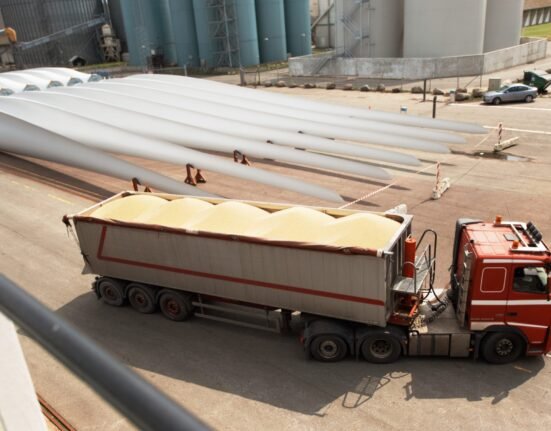Around this time in 2022, share prices across the infrastructure trust sector started heading in the wrong direction – slowly at first, and then faster as the impact of rising interest rates became more obvious. Few had quite anticipated the scale of the correction, how long it would last, or how correlated to gilt yields these assets would turn out to be.
Three years later, the sector is not yet out of the woods, despite a partial recovery over the past few months. Renewable energy trusts in particular face existential questions. So what now?
A tale of two sectors
Infrastructure trusts are divided into two main groups: those investing in a range of different infrastructure assets, including the likes of roads, hospitals and digital infrastructure, and those specifically focusing on renewable energy. The Association of Investment Companies labels the first group as the core “infrastructure” sector, and the second as “renewable energy infrastructure”.
As the chart below shows, the two do not always move in tandem – they clearly diverged in the second half of 2024, for example. As at 6 June, the infrastructure sector was trading at an average discount of 14.5 per cent; for renewable energy trusts, this was 27.6 per cent.

Some of the issues they face are the same. As high-yielding assets, they have to deal with competition from fixed income now that bond yields are higher once again; and for both an imbalance between excess supply and reduced demand from investors has generated stubborn discounts to net asset value (NAV), which are proving very hard to shake. Arguably, if nothing else changes, both subsectors need to shrink in size given the surfeit of options available.
On top of this, renewable energy trusts have had to contend with fluctuating power prices and unfavourable weather conditions, which impact energy generation. For example, in the first quarter of this year, Greencoat UK Wind (UKW) reported energy generation levels of 18 per cent below budget, as a result of unseasonably low wind levels. “The price of power and the assets have proved much more volatile than anybody imagined,” says Charles Murphy, senior research analyst at Singer Capital Markets.
Investors used to seek out these trusts for their juicy yields and relatively low risk. The yields still look attractive, even in comparison to bonds – yields averaged 9.4 per cent across the renewables sector as of 6 June. But they come with more volatility than investors would like.
This is one reason why the more vanilla trusts, International Public Partnerships (INPP) and HICL Infrastructure (HICL), have held up better; their government-backed revenues are seen as more stable and less risky.
A capital allocation problem
Hefty discounts mean that infrastructure trusts are not in a position to raise equity, which can leave them in a tricky position if they need cash for their portfolios. Daniel Lockyer, senior fund manager at Hawksmoor Fund Managers, explains that trusts used to deploy short-term debt (the so-called ‘revolving credit facilities’ (RCF)) as a form of bridging finance, which they would then pay back by raising equity on the market. This is no longer possible, and some funds got stuck with the debt – being short-term, this can be relatively expensive.
Many then started to sell assets with the intent of paying off borrowings and buying back shares to try to combat discounts, with mixed results. A recent example is Greencoat Renewables (GRP), which has announced total asset sales of about €200mn over the past six months; the trust’s RCF was €201mn (£170mn) drawn as at 31 March, and the trust is aiming to reduce its gearing below the 50 per cent mark (currently it’s around 54 per cent).
However, both Murphy and Lockyer say that across the renewables sector, asset sales are not happening at quite the pace shareholders would like to see. “A lot of funds said they were going to be selling assets to pay down their revolving credit facilities, and then largely failed to actually achieve that,” says Murphy. “When you say you are going to sell some assets and then you prove you can’t, there is then a question of whether the asset is correctly valued.” In a nutshell, some trusts might be struggling to sell because they are asking for the wrong price – which leaves investors with less confidence in their NAV.
After selling £90mn-worth of assets over the past year, and after reviewing a range of options including a managed wind-down and a targeted divestment approach, Foresight Environmental Infrastructure (FGEN) said earlier this month that it is planning no further disposals in the near term.
Renewable energy portfolios typically generate a lot of cash, often above the dividend levels promised, so the sector is not completely reliant on asset sales. But there are also various conflicting capital allocation priorities. As well as paying off debt and buying back shares to try to reduce discounts, in the long term they will need to replenish their asset base as the life of their current investments naturally ends – although this is not an immediate concern.
Read more from Investors’ Chronicle
No easy deals
Much has been written about the potential for M&A activity in the sector, and indeed some things are moving, with BBGI Global Infrastructure (BBGI) and Harmony Energy Income (HEIT) both in the process of being taken private. Both offers were above or near NAV, which is encouraging for the rest of the sector; there might well be more bids to come – many investors who bought in during better times will certainly be hoping so.
One alternative would be trusts merging to create bigger, more liquid vehicles. The wealth management industry (a big buyer of investment trusts) has also undergone significant consolidation in recent years; bigger firms tend to avoid trusts below a certain market capitalisation, so joining forces could in theory help close discounts.
But this is not a given, and either way consolidation is proving easier said than done. Foresight Solar’s (FSFL) board said last month that it made a formal proposal of consolidation to another company (Bloomberg later reported this was NextEnergy Solar (NESF)), but that it had been “unable to ultimately advance” and discussions were terminated.
Alex Ohlsson, chair of Foresight Solar, believes something will eventually give. “The generalised disposal of assets among renewable infrastructure investment trusts to return capital to shareholders will result in a smaller sector with fewer participants,” he says. “The board believes consolidation will be a major feature in the year ahead to create larger, more liquid vehicles.”
Numis analysts say shareholders appear divided, with some favouring the creation of larger, more liquid trusts, while others would like a partial cash exit where possible. “We continue to believe that M&A is increasingly likely given the prevailing discounts, but clearly deals are hard to conclude,” they note.
In some cases, contrasting shareholders’ views may have left boards reluctant to push for more radical solutions, with the focus being instead on buying back shares where possible, holding continuation votes and increasing marketing efforts. The trusts have also been moving towards management fee arrangements that are at least partly based on market cap rather than NAV, which should help better align their interests with those of shareholders.
But mergers are generally tricky, particularly when the underlying assets are illiquid, as in this sector. “M&A is always difficult… unless someone turns up with a cheque,” says Murphy. He notes that there are a number of complicating factors, including management contracts and the fact that some management groups in the sector are quite small, so a single trust might be a significant part of their business. Egos can also play a role – nobody wants to be the one being ‘eaten”’
Reasons for hope
All of the above does not mean that the sector is completely lacking in opportunities. One reason for optimism is lower base rates, although cuts have been happening at a fairly slow pace of one per quarter.
If competition from fixed income is one of the causes of the discounts, rate cuts should arguably help these trusts. Meanwhile, their NAVs have also been hit by increases in the discount rates used to value assets; but these should have at the very least stabilised, and might yet come down.
However, both factors are correlated to bond yields more than they are to base rates; and those yields have not eased yet. Yields on 10-year gilts, for example, are actually higher now than they were a year ago.
Meanwhile, the government’s push for new infrastructure projects might eventually trickle down to some of these trusts and give them a boost; although they are not at the forefront of this trend because they do not typically take on construction projects.
Some analysts have also suggested that with UK pension funds having to invest more in private assets, they could look at investment trusts – alongside the more obvious solution of committing to private equity and infrastructure funds dedicated to institutional investors. However, there might once again be an issue of scale and liquidity here, particularly as the pension industry itself is also headed towards consolidation; big pension funds will struggle to invest in sub-scale investment trusts.
For now, the strongest investment case for these trusts is the yields on offer. Patient investors can bag the income as they wait for M&A activity or for a recovery of the shares – but they should be aware the wait could equally be very short (if their trust gets bought) or very long. “I think the most important thing to focus on is dividend cover,” says Lockyer. “Make sure that there’s plenty of dividend cover so that investors can be sure of the yield and that volatile power prices don’t affect the income.”
Within the infrastructure sector, INPP and HICL are great for safe income and good yields. A more adventurous option is 3i Infrastructure (3IN), which Murphy notes is not looking particularly cheap (the discount was 9.9 per cent as at 6 June) but has a very strong record. “It is basically the most highly rated infrastructure fund, and that’s because it’s been so good and so consistent,” he explains.
Among the renewables, Lockyer likes The Renewables Infrastructure Group (TRIG), which he says is “well placed” and could easily be the one consolidating other trusts. It is trying to dilute its chunky exposure to wind assets, and could do so by buying one of the solar trusts, for example. Meanwhile, Murphy cites Foresight Solar as a relatively vanilla option on an attractive yield; he notes that most of its assets are in the south of England, and as such should not be impacted by the potential introduction of zonal power pricing (which would see lower prices in areas where there is more supply and less demand).







